
 |
| —*ADVERTISEMENT— |
 |
| CODE UPDATE | ||||||||||
| Significant Code Changes to the 2009 A117.1 Accessibility Standard | ||||||||||
| (The information below is excerpted from the Significant Changes to the 2012 International Codes series.) | ||||||||||
| A new exception in Section 1004.11.3.1 clearly addresses the need for only a single lavatory to be accessible within the same bathroom in a Type B unit, Option A bathroom. Click to continue reading more on this update to the 2009 A117.1 Accessibility Standard. (The 2009 A117.1 Accessibility Standard is referenced in the 2012 IBC.) |
||||||||||
| The Significant Changes to the 2012 International Codes series has been developed by the International Code Council and published by Cengage Learning to assist code officials, architects, engineers and other construction professionals transitioning from the 2009 to the 2012 editions of the International Codes. The series offers a comprehensive yet practical analysis of hundreds of the most critical changes from a very active code development cycle. Each color publication contains: revised code text; a summary of each change listed; in-depth change analysis; and a detailed photo, illustration or table for each change to deepen understanding. Coverage reflects provisions with special significance, including new and innovative design ideas and technologies, modern materials and methods of construction, and current approaches to safety and stability. Authored by ICC code experts, these useful tools are "must-have" guides to the many important changes in the 2012 International Codes. | ||||||||||
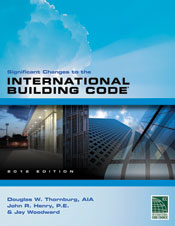 |
 |
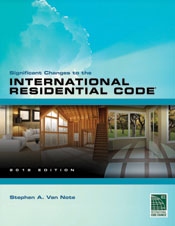 |
 |
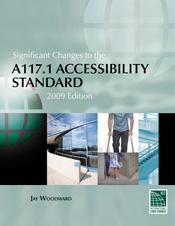 |
||||||
| —*ADVERTISEMENT— |
 |
| CODE BASICS |
| Building, Based on the 2009 International Building Code |
| (The information below is excerpted from the 2009 Building Code Basics series.) |
| The American with Disabilities Act (ADA) is civil rights legislation providing a clear and comprehensive national mandate for the elimination of discrimination against individuals with disabilities. It also provides a clear, strong, consistent and enforceable standard. The ADA is enforced by the federal Department of Justice through civil rights litigation.
Click to continue reading more on this excerpt from the Building Code Basics: Building, Based on the 2009 IBC. |
| The Building Code Basics series based on the 2009 International Building, Residential and Fire Codes and 2012 Building, Residential and Green Construction Codes explains requirements using non-code language to help you understand the material or explain it to others. Technically accurate and easy to understand, these are the perfect resources for builders, owners, students, plan reviewers, inspectors and permit technicians. Each book contains: 150-plus color diagrams and photos that help readers visualize correct code application; numerous real-world examples; content that pulls together related information from various code sections into one convenient location; and a glossary of code and construction terms to clarify key terminology as it applies to the code. |
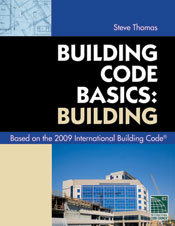 |
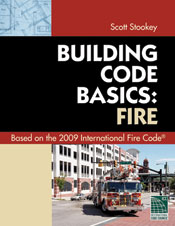 |
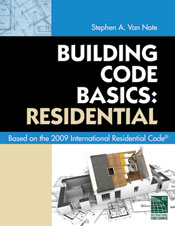 |
||||
 |
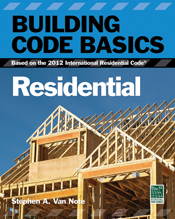 |
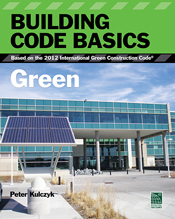 |
| —*ADVERTISEMENT— |
 |
| CODE Q&A |
| 2009 International Fire Code Provisions |
| (The information below is excerpted from the 2009 International Codes Q&A series.) |
| A question about Section 907, fire alarm and detection systems, is raised and answered: Q: Are all Group A occupancies required to have some form of a fire alarm system? As I read the IFC, it speaks of manual alarms being exempt if the building is equipped throughout with an automatic sprinkler system and alarms activate upon sprinkler water flow. Or does the provision in this section only apply to Group A occupancies with an occupant load of 300 or more? Click to get an answer to this code question and to continue reading more on this excerpt from the 2009 IFC Q&A. |
| Get expert answers to hundreds of the most frequently asked real-world questions. The 2009 Q&A series will assist engineers, architects, inspectors, fire and building officials, and plans examiners with finding answers to common code questions that arise during design, plan review, construction and daily code enforcement. Features: many new questions and answers; detailed photos, tables and illustrations that provide a clear understanding of both the intent and meaning of the code text; the relevant code section printed before the question and answer for easy reference; and discussion on a wide variety of topics including: accessibility, fire resistive construction, means of egress, building planning, foundations, fire protection systems, hazardous materials, plumbing and mechanical systems, prescriptive compliance method, determination of substantial damage, and much more. |
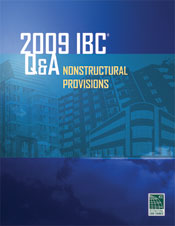 |
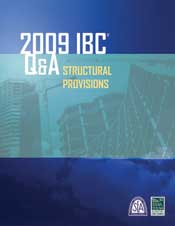 |
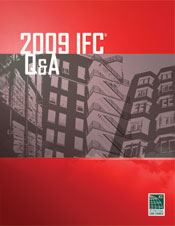 |
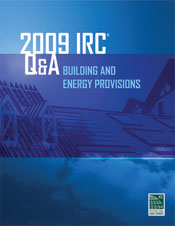 |
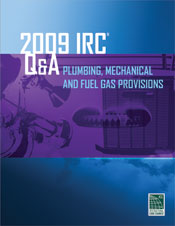 |
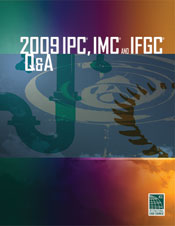 |
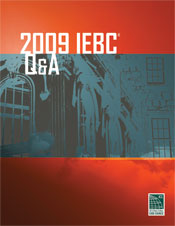 |
 |